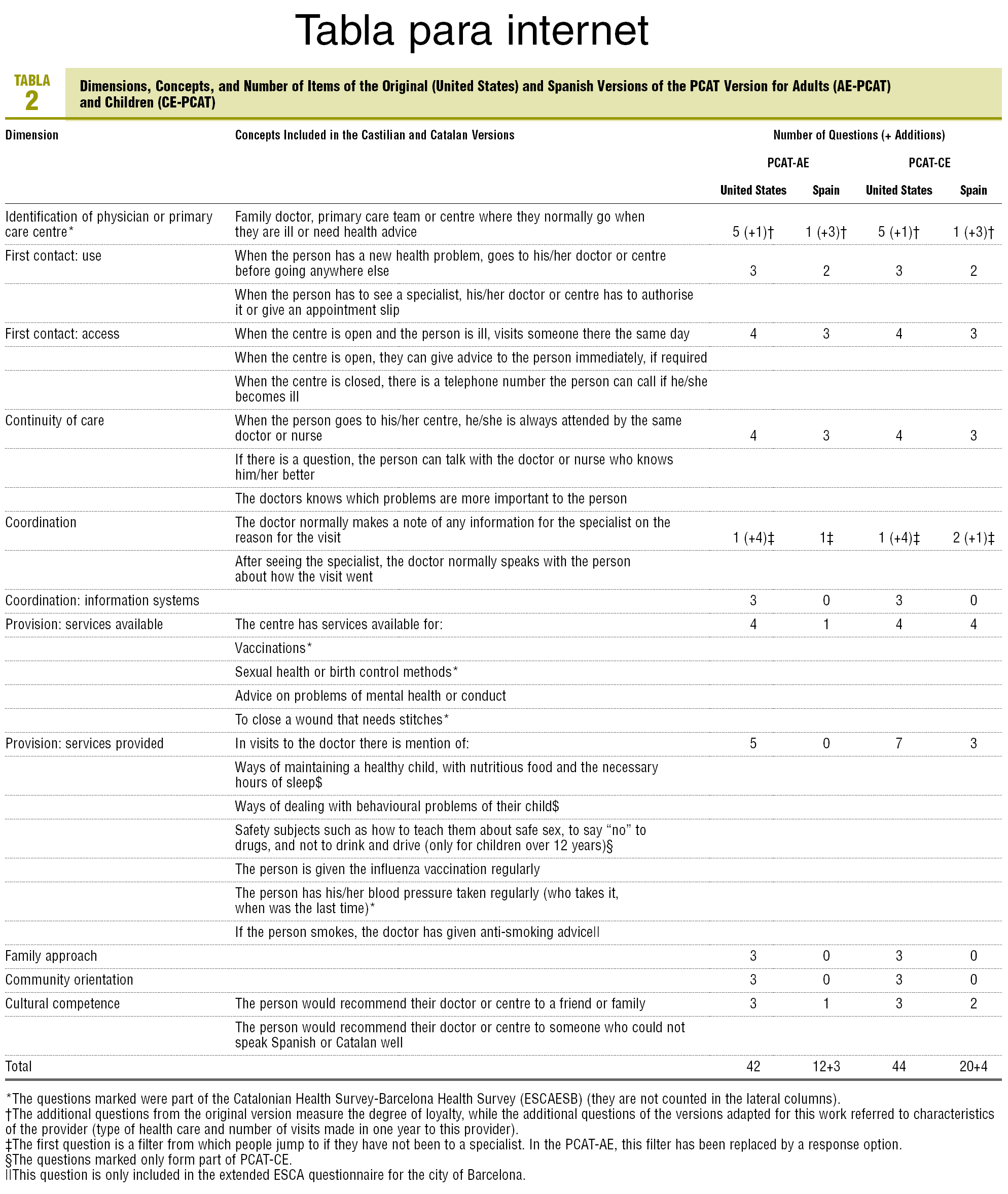A growing interest in improving evaluation processes has been seen over the last few years, in the health system in general, and primary health care (PHC) in particular. This is basically due to the recognition of the importance of evaluation as a key element for the continuing improvement of quality in the health care provided to the population.1 Currently one of the main challenges is the development of suitable, valid, reliable, and easy to use procedures and tools to be able to determine the level of competence with which the health services perform their functions and to what degree they have achieved their previously formulated objectives. The information provided by these tools should be fed back into the planning process and thus ensure that the decision making process is based on scientific tests. In this context, studies such as that of Pasarín et al, are important, by adapting developed and rigorously validated measurement tools and making them available for use in our country, (like the group of Primary Care Assessment Tools [PCAT]), which enable the level of PHC compliance with their core functions to be evaluated and which may be included in systematic evaluation processes. The tool that has been adapted in this work is directed at the PHC user population, which has as its purpose to collect information on their experience as regards the principal characteristics of this health care setting. The evaluation of PHC services requires using many information sources and from different approaches. Traditionally, and not without a certain amount of paternalism, as health professionals we have decided, on the basis of our experience and knowledge, what constitutes a quality service, and on many occasions we have considered that it is sufficient to work according to the rules and the scientific-technical standards. Thus, the majority of works that have evaluated PHC services and the benefits of the reform on the health of the population and the quality of care they normally receive has been centred on the areas associated with clinical practice (such as the quality of the drug prescription or the resolution capacity, for example), and on the user satisfaction. However, this approach is inadequate to evaluate the group of dimensions and factors which make up quality and aspects very relevant to PHC such as accessibility, longitudinality or continuity of care have been studied much less.
We must not forget that the focus of attention of PHC does not consist of health problems, but people, and that it is not enough just to be concerned with safety, effectiveness and efficacy of the care that is provided, but rather that the human factor is essential.
Therefore, it seems obvious that the user has to play a key role by providing information on aspects of health care that influence results and satisfaction of their needs and expectations. The administering of a survey to find out the opinion and experience of the population achieves the objective of avoiding so-called "expert bias," that tends to evaluate the reality differently from what it is, since the experience of the experts as users of the health service is different to the rest of the population. Thus although it is true that patients and professionals agree in their assessment of the importance of many factors, there are also areas of discrepancy, and that they may (and in fact normally do) have different points of view on what constitutes good PHC. The majority of studies agree in that patients give greater importance to aspects such as time availability and services, accessibility, continuity of care, the information they receive on their health problems or the doctor-patient relationship, whilst they place less emphasis on organisational aspects.2-4
Currently, patients are also experiencing a profound change as users of health care. Their expectations on the answers that the health system must give to their health problems are growing, in such a way that their level of demand is increasing. The development of the cultural and education level of the population has notably contributed to this phenomenon, as well as the increasing use made of the new information technologies, that has made it possible for them to access a multitude of sources that before were considered exclusive to the professionals, in such a way that their demands of more and better care have multiplied considerably.
Therefore, initiatives need to be promoted that make it easier for the users to express their opinions and be taken into account when making decisions on the health system, and that are well received. And for this reason, it is important to have tools such as PCAT available, which have previously evaluated psychometric characteristics,5,6 that enable the degree to which, from the user perspective, PHC fulfils its core attributes to be evaluated, such as, being the first contact with the health services for the user, maintaining continuity of care, coordinating health care and making available and providing services deemed necessary in this setting. It only remains to thank the authors of this work for the effort in carrying out this complex process of adapting a questionnaire, developed in the United States, to our country, given the difference in health models, as well as reducing the number of items with the purpose of making it easier to include in the health surveys conducted in our country.
Key Points
* Evaluation is a key factor in the continuing improvement of health care quality.
* The evaluation of PHC requires the use of different information sources and different approaches.
* Evaluation is currently focussed on clinical practice and user satisfaction.
* Initiatives must be promoted that enable the users to express their opinions and be taken into account in the making of decisions on the health system.









